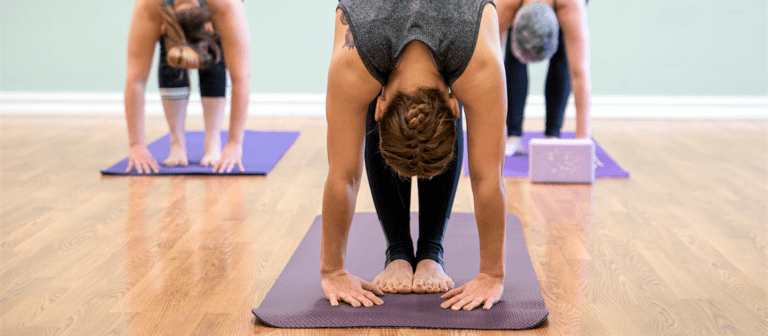You’ve been planning the launch of your new yoga business for a while now and can’t wait to open your doors. From the amazing teachers you’ve recruited to the beautiful space you found to call home, you know your yoga classes are designed to make people happier.
But how confident are you people will be willing to pay for those classes? If you set your prices based on intuition alone, you’re missing a valuable input: what yogis say they will spend on their practice.
Some yogis are willing to drop $100 on leggings, while others might struggle with a monthly membership. So what’s the sweet spot when pricing your classes and events? You have to walk the line between what people are willing to spend and how much they can afford.
That’s why Eventbrite teamed up with OnePoll to survey 2,000 Americans on their yoga habits and spending trends. Here’s what we found out about their pricing preferences and monthly yoga budget.
How much to charge for your yoga classes
Our survey found that just under half of respondents (44%) spend $11-60 on yoga classes in a typical month. When it comes to the price of individual classes, 37% said that once the cost hits $30, it’s too expensive. But that doesn’t mean you can’t take your prices up, ever.
There are big spenders willing to pay more, especially for experiences they perceive as worth it:
- 14% said they’d spend $30-50
- 6% would spend $75
- 8% would spend up to $100
- 8% would spend $150-200
Pro tip: Price high, then offer discounts
At Rocky Mountain Goat Yoga, discounts have been successful in enticing first-time attendees to try out classes. Says owner Jimmy Naron: “Discounts are a big driver for sales. Make your discount codes personal. We offer discounts for veterans, for children, or for residents of a certain city. It’s a blanket discount, but the personal promotion code.”
Things to sell in your yoga studio or at your yoga event
There’s a reason why most yoga studios have an area dedicated to merchandise. It’s hard to be profitable on classes alone. So what are the best “things” to sell in your yoga experience? Here are the top three that our survey revealed.
1. Snacks and beverages
One way to encourage yogis to buy higher priced tickets is to enrich your experience with add-ons like healthful snacks or mindfulness lectures. The average yogi is willing to spend $40 on special, one-time yoga experiences like these — while 18% are willing to spend $50-100 and another 8% will spend even more than $100.
“We try to bring in as many local companies as possible,” says Susie Martin, co-founder and creative director at It’s for Charity! Events. “They’ll donate goods like kombucha or cold brew coffee, and we incorporate it as part of the ticket. It’s a fun extra for the experience.”
2. Wellness activities
Consider incorporating wellness activities like meditation or spa visits. After all, 22% of yogis already spend $10-50 a month on these activities. Plus, turning your main yoga offering into a bigger wellness experience can broaden your event’s appeal.
3. Apparel and equipment
There’s no reason your yoga experience can’t tap into the $33,840 yogis spend in a lifetime on yoga equipment and apparel, either. Partner with local brands to stock your event with supplies, or brand your own merch for yogis to flaunt around town.
The average salary for yoga instructors and studio owners
Part of your business plan — and something that absolutely impacts how much your charge — is your own salary. (And the salary of any other teachers you need to pay, too.) So how much do yoga teachers typically make?
If you’ve been a teacher for a while, you’ve probably already got a good idea of what this looks like. But if you’re relatively new to yoga, or branching out into a different type (like Jimmy Naron did when he moved from traditional to goat yoga), you might need a ballpark figure.
- The average salary for a yoga teacher is $37,900 per year, according to Glassdoor
- By class, depending on your teacher’s experience, the range is $35 – $100
- Then there’s the mat incentive: Many teachers expect an additional $1-3 for every student after 10
Calculate and grow your yoga business’s profit
To find your profit, estimate how much you’ll make from classes and the add-ons above (apparel, equipment, wellness enrichments, and more). Then, subtract how much you’ll need for salaries for you and your teachers and staff (teachers often double as studio managers).
Then, think about strategies to grow your profit. What else can you sell, or how can you draw more people to your classes? Discover what the data says can help in The Rise of Yoga Events: New Data on How to Grow Your Yoga Business.





